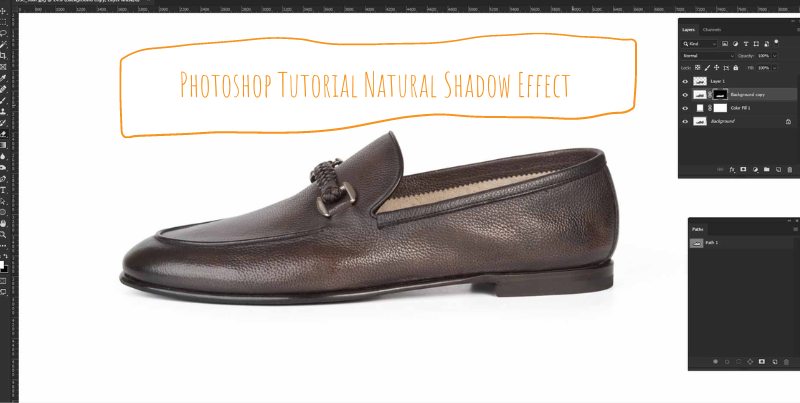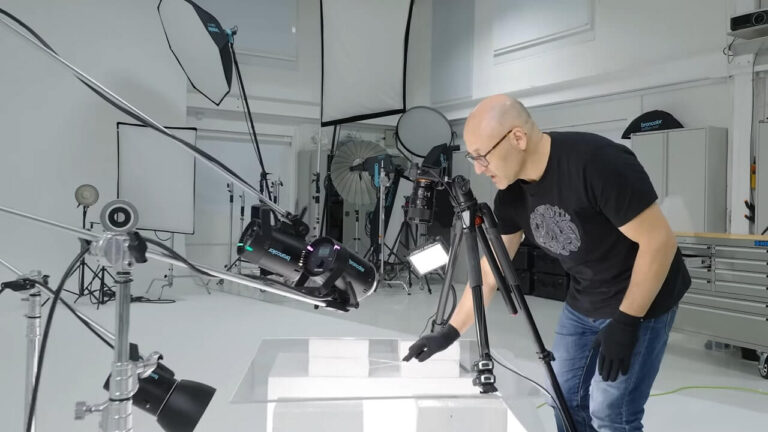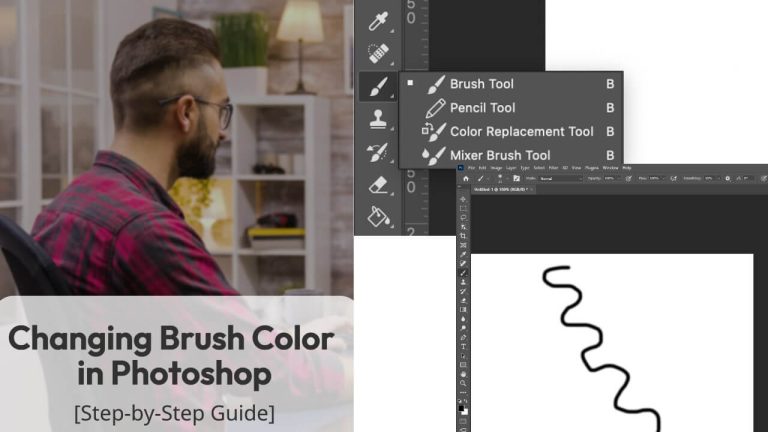Learn how to create realistic or natural shadows for product images with this comprehensive Photoshop tutorial.
Improving image appearance with realistic shadows is one of the hallmarks of professional image editing. Mastery of creating natural shadows forms a crucial part of the Adobe Photoshop skill set.
Using the natural shadow effect in your eCommerce photographs can make your products pop off the page and into your customers’ shopping carts quickly. It merely takes a few minutes in Photoshop, and there’s no need for any elaborate or costly lighting equipment.
To create a natural shadow in Photoshop, you need to create a new layer specifically for the shadow. You then duplicate the layer you want to cast the shadow and adjust the shadow layer to match your desired angle and intensity. You can use the gradient tool to make the shadow look natural and blur it for a realistic effect.
Step 1: Launch Adobe Photoshop and upload your image.
After you have successfully opened Photoshop, select File > Open from the menu bar. Next, search through your photo library and select the image that you wish to modify.
To follow this tutorial you can use any product or object photos like shoes or bottles. Take a simple one with white background. If the photo does not have solid background you should follow this tutorial on how to remove the background in Photoshop and remove the background.
Then add a solid white background. Once you have learned to create a shadow with a simple one, you can proceed with a complex one with different backgrounds and shapes.

Step 2: From the main toolbar, select the pen tool
Select the pen tool, from the main toolbar to create a clipping path around the subject.

Step 3: Select a new path
Choose a new path from the path toolbar.

Step 4: Draw a clipping path around your product
Start creating a clipping path around the subject to remove the existing background of the picture.

Step 5: Complete the clipping path
Draw and complete the clipping path very precisely.
Step 6: Use ‘Ctrl + Enter’ for selection
Use the shortcut ‘Ctrl + Enter‘ for selecting the clipping path that you have created.
Step 7: Make a new layer 1 Ctrl + J.
Create a new layer as Layer 1. From the layers toolbar or you can use the keyboard shortcut Ctrl + J.
Step 8: Duplicate the background layer, create a mask, and select a solid background.
Make a copy of the background layer and mask the copy layer to make it appear transparent. Next, select a solid color layer and place it in the background.
Step 9: Select a background in the new layer
Make a background selection with your next background copy.
Step 10: Use ‘Ctrl+Alt+2 > Feather’ or ‘Shift+F6’ for smoothness and inverse + Mask

Doing this suppositive add some noise. Now to delete those noises we need to

- choose the lasso tool and select the shadow we want to keep and then
- delete everything else inver the selection by pressing CTRL+Shift +I then
- With the selection active, press the Delete key
Step 11: Use ‘Select > Modify > Feather’ or ‘Shift+F6’ for smoothness
Go to ‘Ctrl+Alt+2 > Feather‘ or ‘Shift+F6, inverse, and mask to smoothen out the subject.
Apply 0.5 feathers to the edges to make them more smooth. First, go to the ‘select’ option from the previous menu, then the ‘modify’ option, and finally the ‘feather’ option. You can also use the Shift + F6 keyboard shortcut.

Watch the videos on the tutorial.
Here, you are all done and covered with the natural shadow effect to make your product image look realistic, unique, and eye-catching.
Natural Shadows may seem like a little feature to someone just getting started with his retail website, but what most businesses fail to realize is that one of the keys to running a successful business is paying attention to every detail.
According to various statistics, shadows might have a significant impact on your website’s overall performance. For a long time, famous online marketplaces have utilized this one-of-a-kind feature in their product photos. However, industry experts recommend that newcomers to the field incorporate it into their own firms.
Final Tips on Making Natural Shadow in Photoshop
Photographs look more professional and credible when they have natural shadows around them. But, unfortunately, you might not take images in the ideal conditions or with the right lighting to get the shadows you want.
Natural shadow can be a drop, reflection, cast way, or any other type of shadow. The realisticness of the shadow depends on the product, light source, angle, background, and surface. It can be said that experienced shadow creation services aim to make a natural one depending on the image’s circumstance. Experience and understanding is the key. Observe real-life shadows cast by objects in different lighting conditions. This will help you understand how shadows behave and their variations.
As a result of natural light reflection, we get a natural shadow. It doesn’t have a phony feel to it. So in your product photographs, it’s always a good idea to keep the natural shadow.
Here is some resource that can help you learn about the natural behavior of shadows:
- Photography and Its Shadow by Hagi Kenaan
- The perception of cast shadows – Author Pascal Mamassian, David C. Knill, Daniel Kersten
- https://www.adobe.com/creativecloud/photography/discover/shadow-photography.html
FAQ
How can I add a drop shadow in Photoshop?
A: To add a drop shadow in Photoshop, go to “Layer” in the top menu, select “Layer Style,” then “Drop Shadow.” In the drop shadow dialog box, you can adjust the shadow settings as needed to create a realistic effect. Read the full tutorial on creating a drop shadow.
How can gradient and blur help to create a realistic shadow in Photoshop?
Begin by selecting the object and generating a gradient on a new layer, transitioning from dark to transparent to simulate shadow intensity. Apply the Gaussian Blur filter to the shadow layer for softness, adjusting the blur radius based on the object’s distance from the surface. Modify layer opacity and blend mode (e.g., Multiply) for accurate blending. Refine the shadow with the Eraser Tool and layer masks. Account for the light source’s direction and intensity for authenticity. Utilize multiple layers with varying opacities for added realism. By integrating these techniques, you can effectively emulate natural light interaction and craft convincing shadows in your Photoshop compositions.
What settings should be used to create a natural and realistic shadow in Photoshop?
here are simple settings to create a natural and realistic shadow in Photoshop:
1. Opacity: Make the shadow somewhat see-through, around 20% to 70%.
2. Blend Mode: Use “Multiply” for a darker shadow or “Soft Light” for a softer one.
3. Color: Choose a shadow color that matches the lighting, like dark gray or brown.
4. Gradient: Create a fading effect from the object’s edge for a realistic shadow.
5. Blur: Soften the shadow’s edges with Gaussian Blur. More blur for distant objects, and less for close ones.
6. Direction: Match the shadow’s direction with the light source in your picture.
7. Distance: Adjust shadow sharpness based on how close the object is to the surface.
8. Layer Mask: Refine the shadow shape with a mask for accuracy.
9. Multiple Layers: Use different layers for various light sources and objects in complex scenes.













